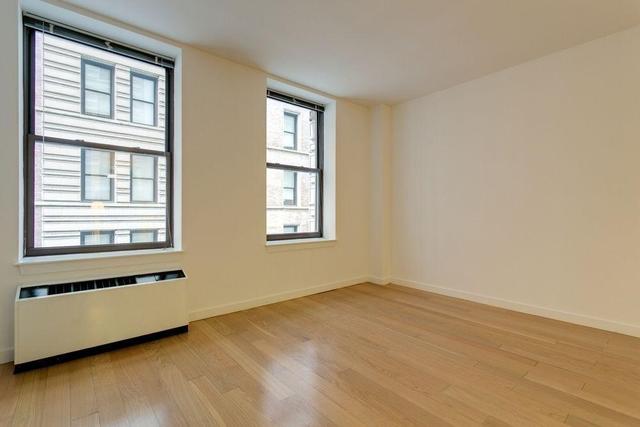
How Do Mice Get in Upstairs Apartments?
By: ROS Team
Mice are resilient and resourceful creatures, capable of infiltrating spaces that may seem impenetrable. One of the common issues faced by residents of upstairs apartments is the unwelcome presence of mice.
Understanding how these rodents gain access to upper levels can help tenants take proactive measures to prevent infestations.
Do Mice Usually Go Upstairs?
Yes, mice can go upstairs in a house. Mice are skilled climbers and can access higher levels by exploiting exterior entry points, shared spaces, and human-related factors.
What Causes Mice to Enter a Home?
Mice enter homes primarily in search of food, water, and shelter. Common factors that attract mice include the availability of food crumbs, open food containers, unsecured trash, and accessible entry points such as gaps or cracks in walls. Warmth and shelter also contribute to their decision to enter a home, especially during colder seasons.
How to Identify if You Have a Mouse Problem?
To identify a mouse in your house, you may employ the following:
Droppings:
Check for small, pellet-like droppings in hidden areas, cabinets, or along baseboards.
Gnaw Marks:
Look for chewed wires, cardboard, or furniture, which are signs of mouse activity.
Nesting Material:
Discover shredded materials like paper or fabric, indicating a potential nesting site.
Noises:
Listen for scratching or squeaking sounds, especially in walls or ceilings, particularly at night.
Smell:
Notice a musky odor, as mice can produce a distinct smell in enclosed spaces.
Tracks:
Use a flashlight to identify tracks or footprints in dusty areas, indicating recent mouse movement.
Pet Behavior:
Observe if pets show unusual interest or behavior in specific areas, as they may sense the presence of mice.
Food Containers:
Check for signs of tampering with food containers or evidence of nibbling on stored food.
Visible Mice:
Spotting mice during the day, especially in common hiding spots, confirms an active infestation.
Destruction of Insulation:
Inspect the insulation in attics or crawl spaces for damage, as mice may use it for nesting material.
How Do Mice Get in Upstairs Apartments?
1) Exterior Entry Points:
Mice are adept climbers and can easily access higher floors by exploiting exterior entry points. Common vulnerabilities include:
Vents: Mice can crawl through vents and ducts connected to the building’s exterior. Securing these openings with proper screening can deter their entry.
Wall Gaps: Small gaps or cracks in the exterior walls, especially around windows and doors, provide easy access. Sealing these openings with weatherstripping or caulk can be an effective preventive measure.
Utility Lines: Mice can use utility lines, such as cable or electrical wiring, to climb to higher floors. Close gaps around these lines using steel wool or other materials that mice cannot easily gnaw through.
2) Shared Spaces:
Upstairs apartments may share common spaces with other units, providing mice with pathways to move vertically within the building. Key shared spaces include:
Plumbing Chases: Pipes and plumbing chases can act as conduits for mice to travel between floors. Ensuring these spaces are sealed can minimize the risk of rodent movement.
Wall Cavities: Mice can exploit wall cavities to move vertically and horizontally within the building. Regular inspections and prompt sealing of any gaps or holes in the walls can help prevent their movement.
3) Human Activity:
Human behavior and living habits can inadvertently attract mice to upstairs apartments. Factors to consider include:
Food Sources: Leaving food out in the open or not properly storing it can attract mice. Regularly cleaning and securing food items can reduce the likelihood of infestation.
Waste Disposal: Improperly sealed trash containers or bins can entice mice to search for food scraps. Using tightly sealed bins and promptly disposing of trash can help mitigate this risk.
Pet Food: Leftover pet food can also attract mice. Pet owners should store food securely and clean up any spills promptly.
What To Do If Mice Get In My Upstairs Apartment?
If mice have entered your upstairs apartment, taking prompt action is essential. Here’s a step-by-step guide on what to do:
Identify the Signs:
- Look for signs of mouse activity, including droppings, gnaw marks, and evidence of nests.
- Listen for scratching or squeaking sounds, especially in walls or ceilings.
Clean and Sanitize:
- Thoroughly clean and sanitize the affected areas.
- Eliminate food crumbs, secure food in airtight containers, and properly dispose of trash.
Seal Entry Points:
- Identify and seal any entry points, focusing on gaps, cracks, or openings in walls, floors, and around utilities.
- Use steel wool, caulk, or other mouse-proof materials to close off potential access points.
Set Traps:
- Place mouse traps strategically in areas with signs of activity.
- Use a variety of traps, such as snap traps or humane traps, depending on your preference.
- Check traps regularly and dispose of captured mice promptly.
Consider Rodenticides:
- If traps alone are not effective, consider using rodenticides as a last resort.
- Follow product instructions carefully, placing bait in areas inaccessible to pets and children.
Consult Professionals:
If the infestation persists or is severe, consider consulting pest control professionals, such as those at powerpestcontrol.ca. Professionals can assess the situation, provide effective treatments, and offer advice on preventing future infestations.
How Do Mice Get in Upstairs Apartments: Final Thoughts
If you think you have mice in your upstairs apartment, it’s important to take action right away. Mice can quickly reproduce, and an infestation can become difficult to control if left unchecked. Contact a professional pest control company to inspect your apartment and develop a treatment plan.
Read Also: New York City Rats Issue








